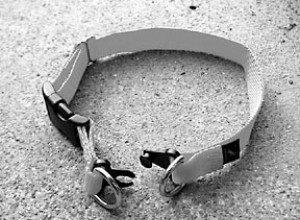犬のペットが好きなら、犬のうんちの質が健康に大きく影響することをすでに認識しているはずです。
通常、健康な犬のうんちはコンパクトで、丸太のような形をしており、より柔らかい一貫性があります。色もチョコレート ブラウンである必要があります。
あなたの毛むくじゃらの友達がチョコレート色の水たまりをいつもより頻繁に出す場合は、消化管または全身の健康に問題があることを明確に示している可能性があります.
あなたの犬がこの多忙な状態に苦しむのを防ぐことはできないかもしれませんが、犬の下痢のさまざまな原因を知ることは、その発生頻度を減らすのに役立つかもしれません.
この記事では、犬の下痢のさまざまな原因と、犬の健康のその他の側面をまとめて、犬の友人の健康を向上させるのに役立ちます.読み進めてください。
犬の下痢は、犬が不規則な間隔で大量のゆるいまたは形のない便をおしっこすることを余儀なくされる状態です.多くの犬の飼育者が考えていることとは反対に、下痢は病気ではなく、さまざまな犬の病気の兆候です.
注:下痢の原因は、軽い病気または深刻な病気である可能性があります。軽度の病気は自然に治るかもしれませんが、深刻な病気は財産だけでなく犬の命も犠牲にする可能性があります。
それを念頭に置いて、犬の軟便の兆候を常に真剣に受け止めるべきです.まず、犬の下痢のさまざまな原因を見てみましょう。
以下は、犬の下痢のさまざまな原因の内訳です。
愛犬が何年も食べ続けてきた食べ物にアレルギーを起こす可能性があることをご存知ですか?愛犬が下痢を繰り返していて、その原因が分からない場合、思いがけない原因が食事にある可能性があります。
この問題を解決するには、犬に低アレルギー食を与えて、下痢が止まるかどうかを確認する必要があります。
犬が改善しない場合は、獣医師に電話して毛皮のような友人に付き添ってもらうことができます。下痢以外の食物アレルギーの症状には、皮膚のかゆみ、耳の問題、脱毛などがあります。
さらに、食事の急激な変化により、愛犬が下痢を起こすことがあります。単に友達が勧めたという理由だけでドッグフードを変更したい場合は、犬が下痢などの副作用を経験することなく変更に順応できるように、徐々に変更する必要があります。
食物不耐症は、犬の下痢のもう 1 つの主な原因です。食物不耐症とは、犬の消化器系が食物を消化できないことを指します。 If your dog is throwing up undigested food, you should subject it to the hypoallergenic diet or call your vet to attend the animal.
Another leading cause of diarrhea in puppies and young dogs is internal parasites like whipworms, Giardia, tapeworm, roundworms, and hookworms.
If your dog has diarrhea and changing its diet does not help, parasites like Giardia might be killing it slowly. You need a vet to test a fecal sample and treat any parasites present.
During teething, young dogs would chew things like watermelon rinds or anything that comes their way to rub their itchy gums. Also, their larger counterparts would eat anything, including furniture, to work themselves up.
As they consume the items on the ground, the dogs may swallow indigestible objects that may get lodged in their intestines or the stomach, exposing them to a grave threat.
The other signs of foreign object obstruction in your fur baby may include abdominal tenderness, constipation, loss of appetite, lethargy, and aggressive attitude when touched.
Though the above symptoms may be accompanied by other problems such as bacteria and parasites, your vet should analyze all the issues in your canine friend and advise you on what to do.
Irritable bowel syndrome is a condition that affects the digestive tract in dogs. It occurs when the inflammatory cells attack the dog’s intestines, interfering with the digestion of food.
It is characterized by symptoms like diarrhea, constipation, stomach cramps, weight loss, and bloating.
Due to the severity of the condition, you should call a veterinarian to attend to your furry friend once you spot the unusual watery poop.
Another cause of diarrhea in dogs could be bacteria from raw meat, improperly cooked food, or food left uncovered for a long time. Experts claim that your dog can also get bacterial infections if you kennel it with an infected dog.
You can detect bacterial infection in a dog if its watery stool has some blood spots or if its stool has shiny mucus on its surface.
One way to reduce food-related bacterial infections is to ask your dog expert about the best dog foods or read about the foods your dog should never eat.
On the other hand, dog diarrhea may result from viral diseases like distemper disease, parvovirus, coronavirus, and other rotaviruses. Besides diarrhea, you can detect viral infection in your dog by observing symptoms like fever, vomiting, lethargy, lack of appetite, and coughing.
注: viral infections are very contagious and fatal. You should address them immediately or, else, you risk losing your pet.
Dog medications can also cause diarrhea as a side effect. Examples of drugs that may cause diarrhea in your dog include N-methyl-D-aspartate (NMDA) receptor blockers and Non-Steroidal Anti-Inflammatory Drugs (NSAIDs) like Metacam Rimadyl and Meloxicam.
You need to discuss the dog’s previous medication with your veterinarian to enable them to administer an alternative medicine.
Pancreatitis is the inflammation of the dog’s pancreas. It can be caused by a high-fat diet, obesity, hypothyroidism, diabetes mellitus, toxication, etc.
The common symptoms of pancreatitis include diarrhea, vomiting, lethargy, fever, abdominal pain, and loss of appetite. You can also suspect pancreatitis in your furry friend if it seems drained in energy and it stays in a praying position most of the time.
Pancreatitis is a severe disease, and you need to call your doctor immediately after observing any of the symptoms listed above.
Another cause of dog diarrhea is Colitis. Colitis is a condition that causes inflammation of the large intestines in dogs. It can be caused by stress and parasites like cryptosporidium, whipworm, Giardia, or even bacterial infections.
The condition is characterized by the release of loose and smelly stool/ diarrhea, usually accompanied by mucus and fresh blood.
Also, a dog that suffers from colitis may experience painful bowel movements due to the inflammation of the colon. Your vet should do fecal tests to identify the proper medication.
If your dog has undergone bouts of recurrent diarrhea, which are non-responsive to medications, then it could be suffering from liver disease. Besides diarrhea, the other symptoms of liver disease in your dog may include weight loss, yellow eyes and lips (jaundice), loss of appetite, frequent urination, and drinking.
The disease may result from factors such as age, infections, and intoxication from certain medications. The other causes of liver diseases may include fatty foods, pancreatic issues, untreated heartworms, and diabetes.
With various causes of diarrhea in dogs, it can be hard to guess the primary cause of the condition. However, familiarizing yourself with the different colors of dog diarrhea and their implication can help narrow down the list of the possible causes for testing.
The diarrhea colors that are worth your attention include:
Bloody diarrhea indicates an infection in the dog’s digestive tract, especially in the large intestines. It happens when the tiny blood vessels in the lower part of the gastrointestinal tract break open due to inflammation and leak blood to the stool.
Yellow diarrhea may result from dietary changes, especially if your dog is new to foods such as chicken and rice. However, yellow and greasy diarrhea with a foul smell may indicate malabsorption disorder, hence a problem in your dog’s small intestines.
Yellow diarrhea may also signify a liver problem in your canine friend. You should consult your vet to advise whether the yellow stool needs immediate attention or not.
Black diarrhea indicates an injury, inflammation, or infection in the small intestines that causes bleeding. Black diarrhea or black spots in stool indicate digested blood. It can also be a red signal of a serious condition such as bowel cancer.
That said, you should call your vet as soon as you identify the black stool; else, you risk losing your dog.
The presence of white specks in your dog’s poop could be a red signal that your pet dog has tapeworm infestation. Normally, the tapeworm eggs take the size and color of small-grained rice and are visible to the naked eyes.
It is also important to note that you can’t see the tapeworm in the fecal matter unless your dog has a severe tapeworm infestation.
If your pooch releases a grey and greasy poop with big and soft mounds, it could signal you of an underlying Exocrine Pancreatic Insufficiency (EPI) or maldigestion.
However, if diarrhea has a normal color with mucus covering it, it could imply inflammation in the colon from dietary indigestion, parasite infestation, or bacterial infection.
Green diarrhea could indicate that the dog has ingested plenty of green vegetables in its meal. However, if green diarrhea persists for more than a day, there could be a problem with your puppy’s gallbladder.
If you spot plastic objects, metals, or grass in your dog’s poop, it is a clear sign that your dog ate something they couldn’t digest. In that case, you don’t have to call a vet if the dog does not have difficulties when peeing.
However, eating everything on the floor and the garbage risks the dog of other infections. It’s always advisable to supply your furry friend with the best immunity and digestion dog supplements to boost their longevity.
If your pooch has runny stools without any color or foreign objects, the chances are that it is suffering from indigestion or is allergic to the current diet. Fasting for 12 to 24 hours will help the dog clear the stuff in the digestive tract and recover.
After 24 hours, you can start feeding it with a hypoallergenic diet.
An excellent example of a hypoallergenic diet is plain rice mixed with canned plain pumpkin and a little chicken.
The other foods which may cool down your dog’s tummy include yogurt, cottage cheese, peeled boiled potatoes, etc.
You can visit our site to access the best dog foods, supplements, clothes, and answers to all your pet needs.
Sometimes, diarrhea in your dog won’t go away until it receives specialized treatment from an experienced vet.
For instance, if your dog is experiencing difficulties when pooing, and only a small water poop is coming out, the chances are that something is lodged inside its digestive tract. And, it will take skills and experience to rescue the dog safely.
Some other conditions like a bloody stool or colored watery stool may indicate a severe internal condition that may need the attention of a dog specialist or risk losing your dog.
In a nutshell, you should not hesitate to contact your vet if diarrhea persists for more than 24 hours.
Dog diarrhea is a serious condition that may cost your pet’s life if ignored. Treating your dog at home may help, but it is not always the best option since you may not identify dog diarrhea’s culprits.
When diarrhea in your dog persists for more than two days, it signals you of a severe condition regardless of the color. And, you should call a vet to rescue your furry friend.
Better still, you can enhance your dog’s health by supplying it with immunity and digestive supplement from reliable suppliers.

好むと好まざるとにかかわらず、ほとんどすべての犬の親は、ペットの人生のある時点で、犬の下痢という不幸な現実に対処しなければなりません。犬の下痢の原因は、ゴミ箱から食べた不快なものから深刻な根本的な健康問題まで、さまざまなものである可能性がありますが、確かなことが1つあります。子犬のゆるい糞に対処することは、あなたとあなたの犬の両方にとって不快です。 。 犬の下痢、その原因、効果的な治療方法について詳しく知るために読んでください。 犬の下痢:概要 犬の下痢は、軽度の不便から深刻な生命を脅かす状態までさまざまです。犬が新しい食べ物や新しいおやつを食べた後、少し柔らかい便を食べることは珍し

犬の安全の概要 –犬の環境を評価し、必要な変更を加えて、犬の健康と安全へのリスクを最小限に抑えます。 –公共の場では、愚かで悪意のある人間や危険な犬から、母鶏のように犬を保護してください。 – 1つまたは複数のペットの応急処置キットを入手し、犬に応急処置を提供することについての本、コース、および/またはビデオを通じて自分自身を教育します。 私たちの犬の仲間の世話人としての私たちの主な責任の1つは、彼らを安全に保つことです。私たちの防御の違反を利用して、疑いを持たない仲間を攻撃するのを待っているだけで、無限の危険が存在するようです。犬を長期間飼っていた場合は、おそらくそれ